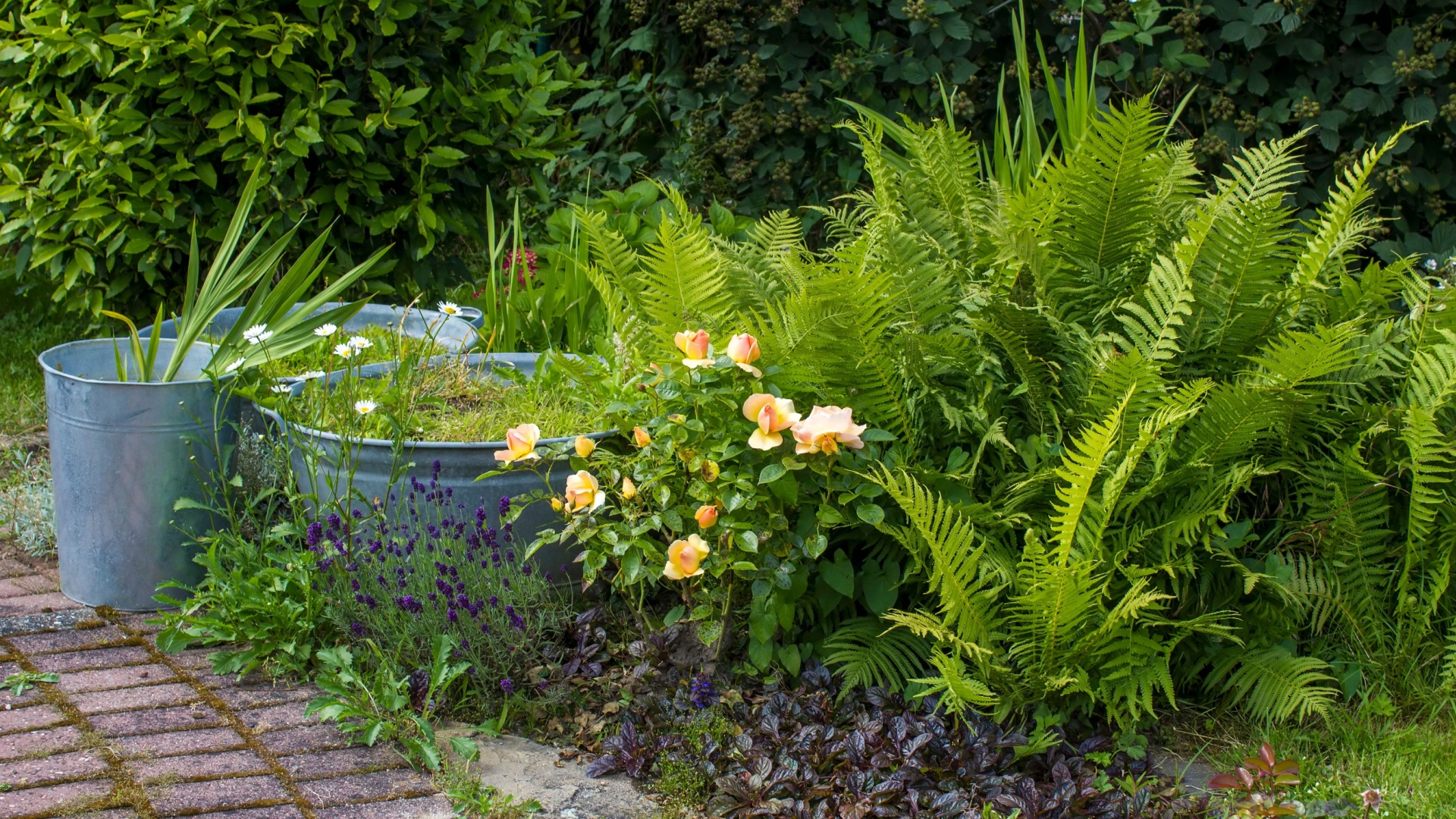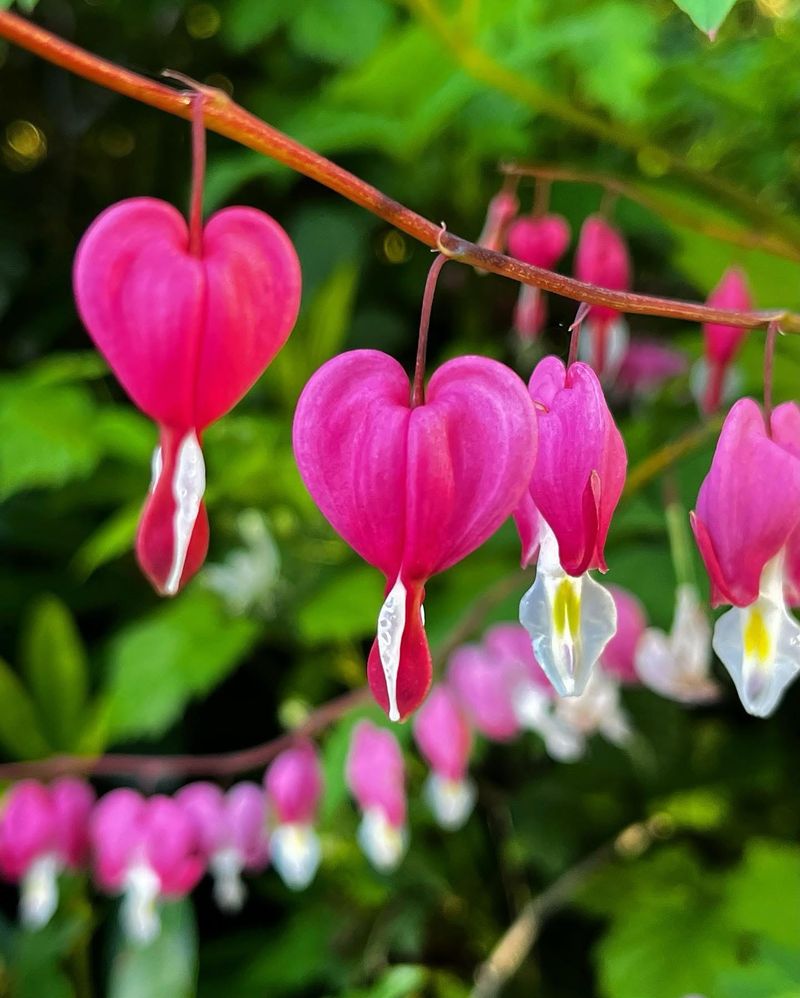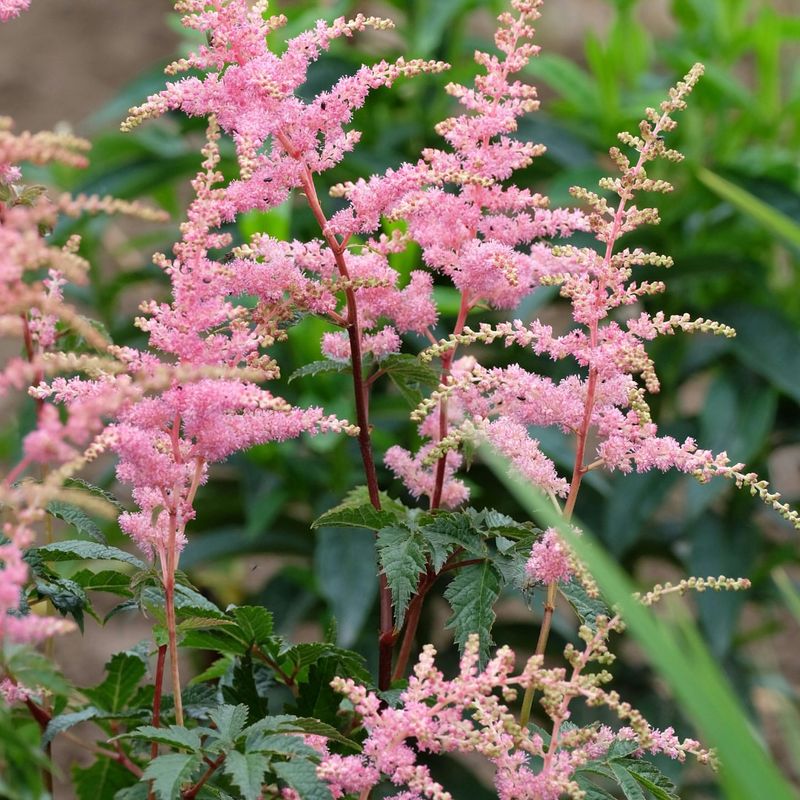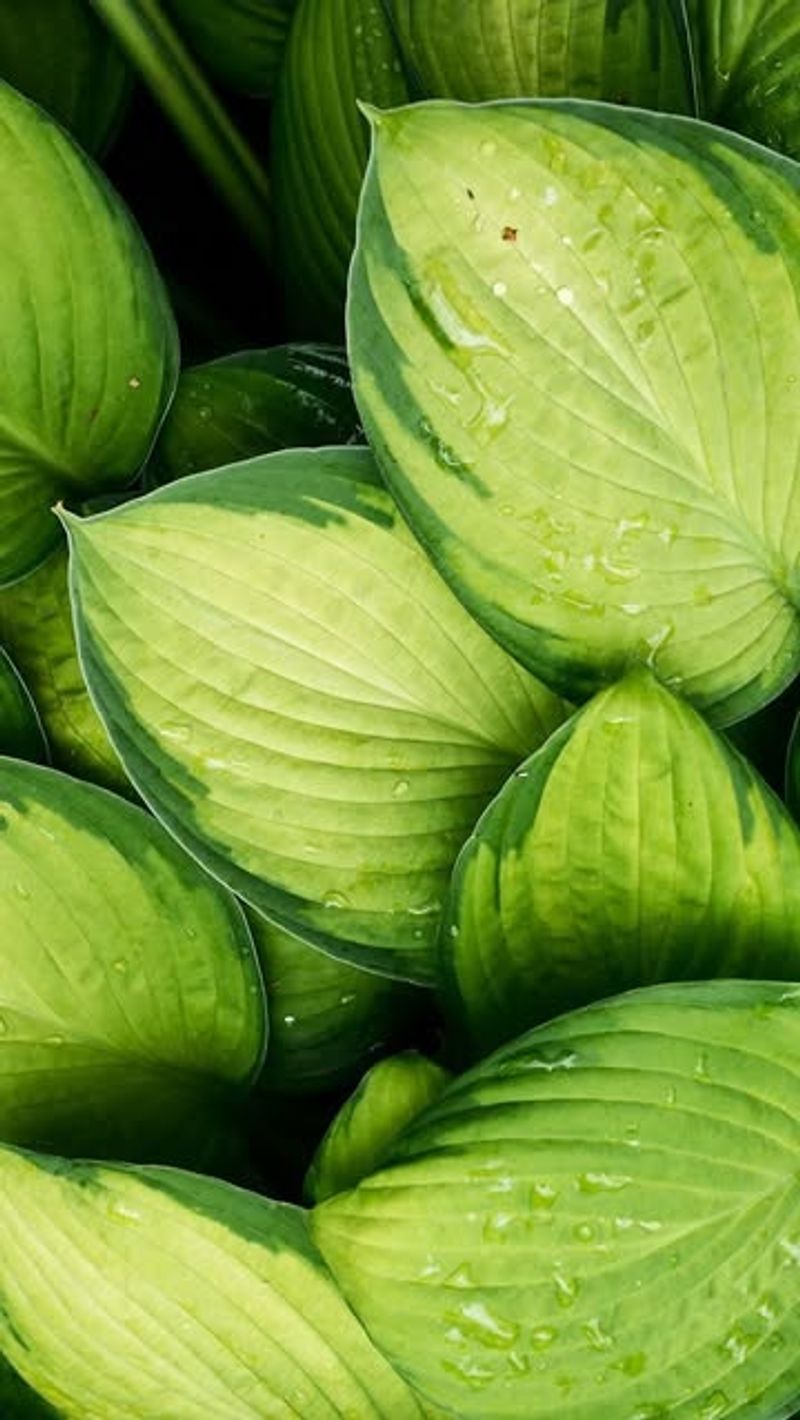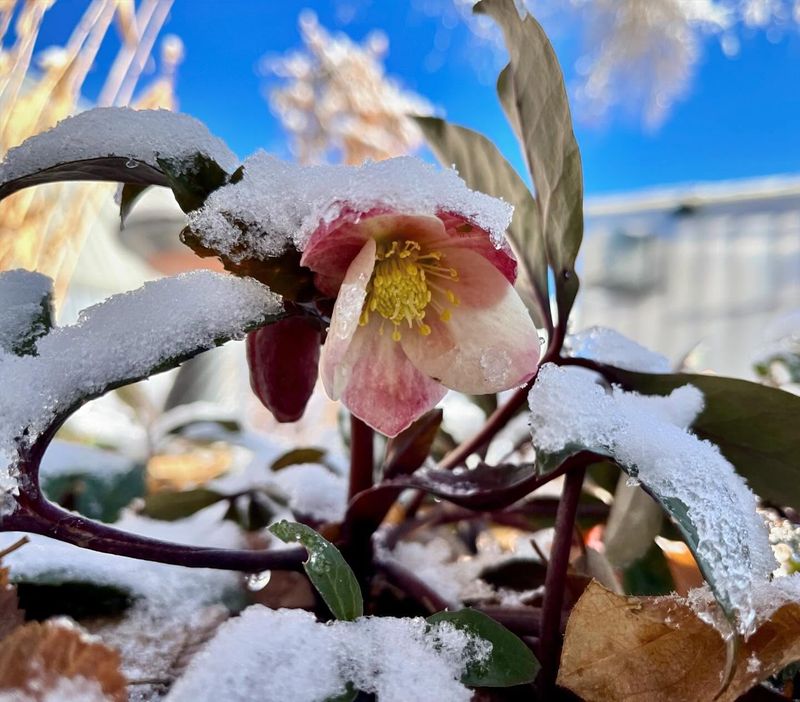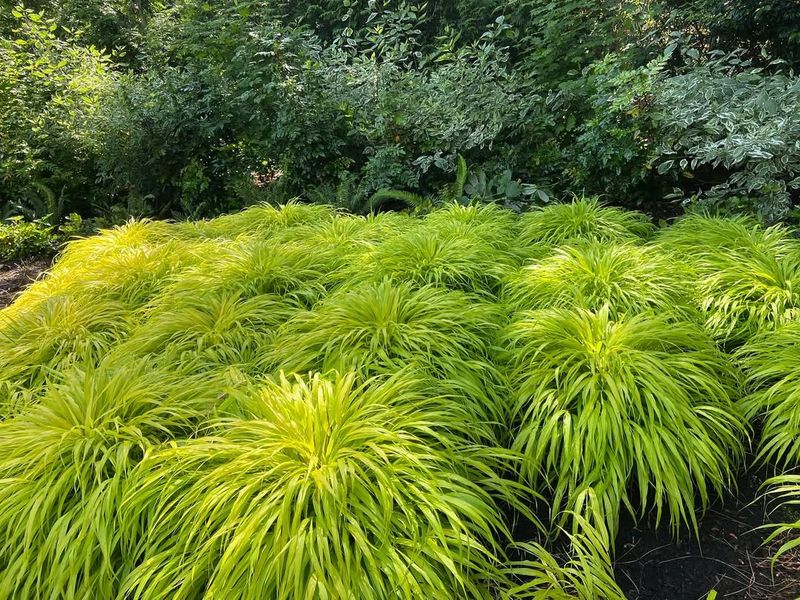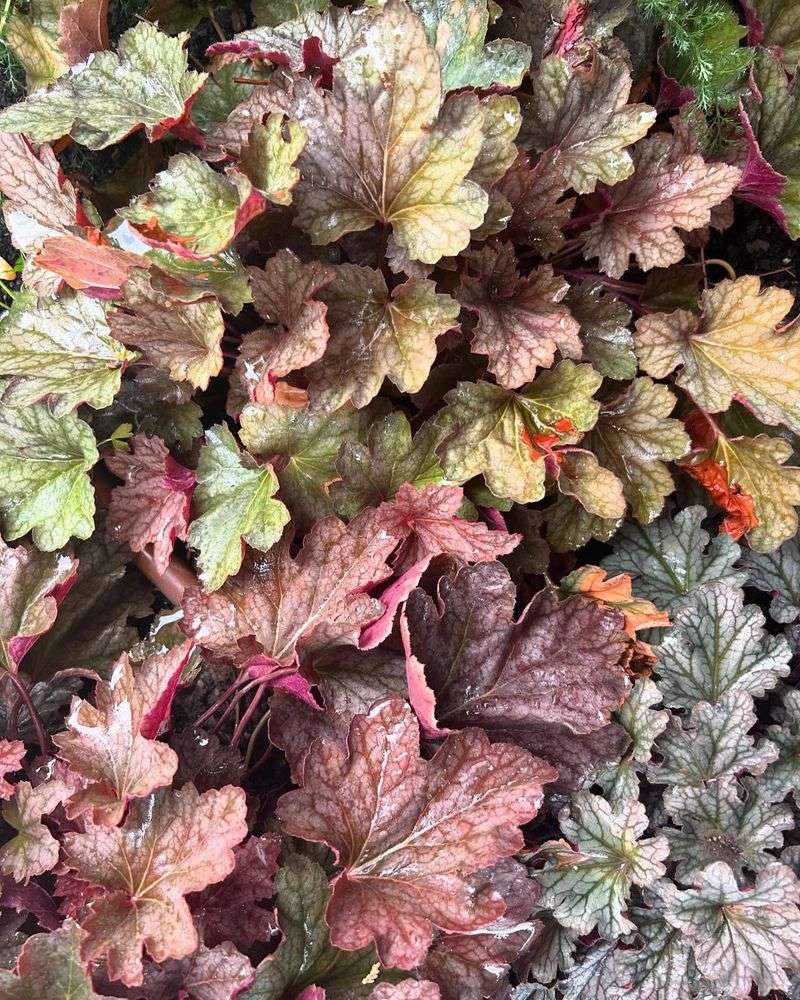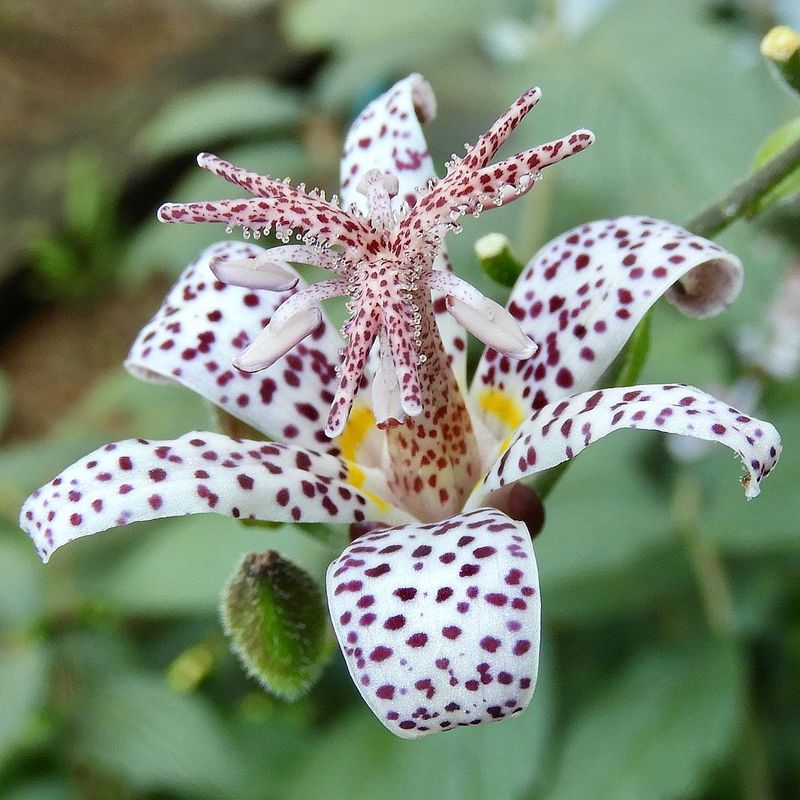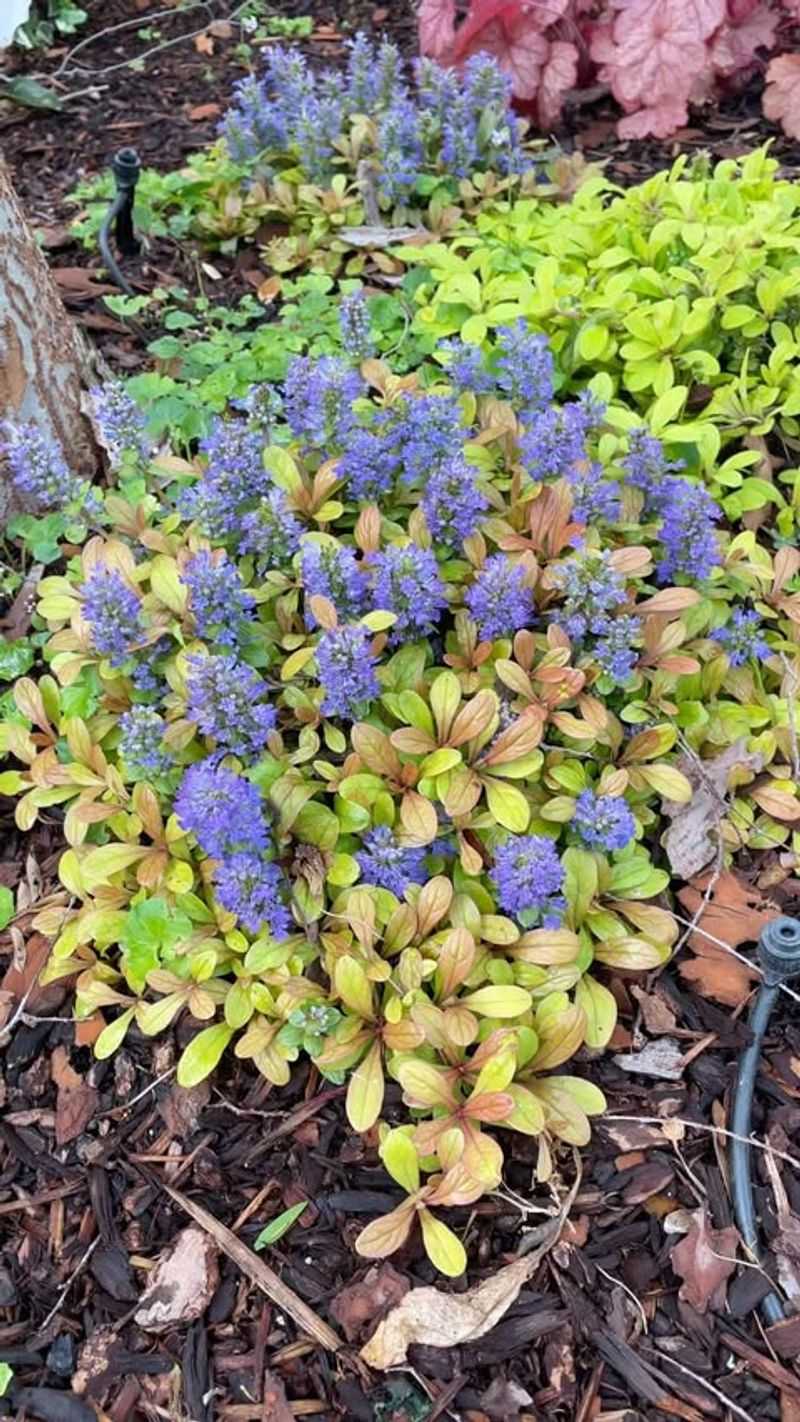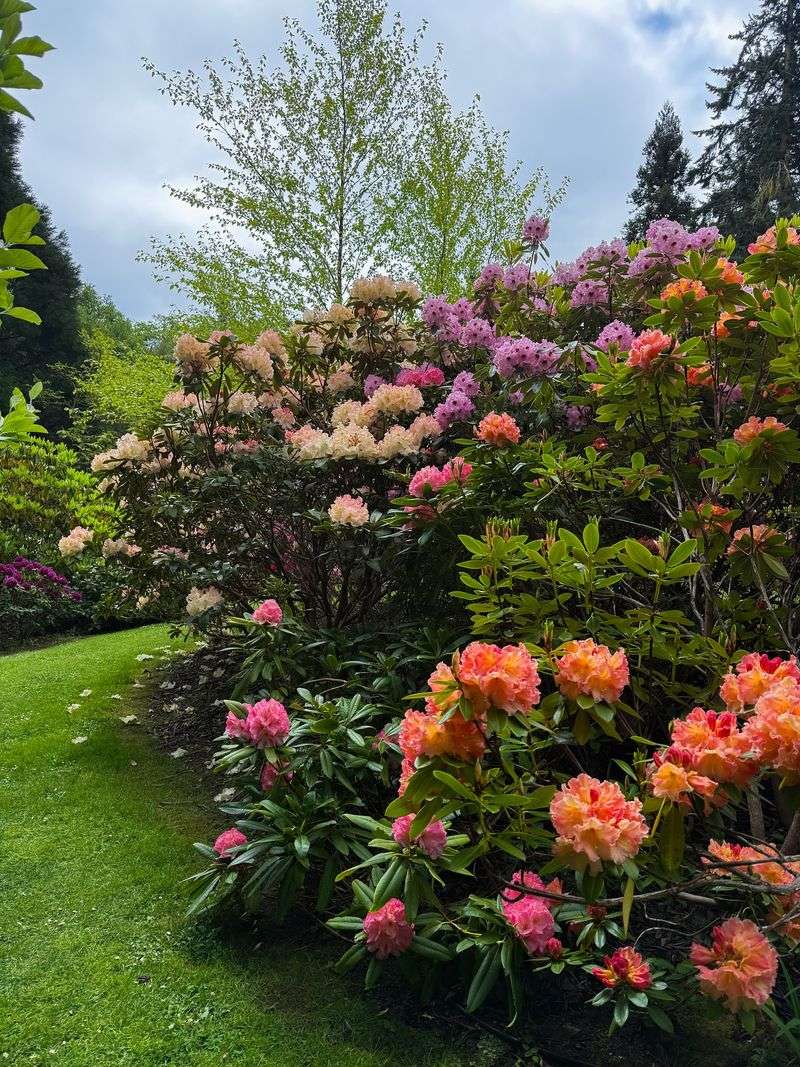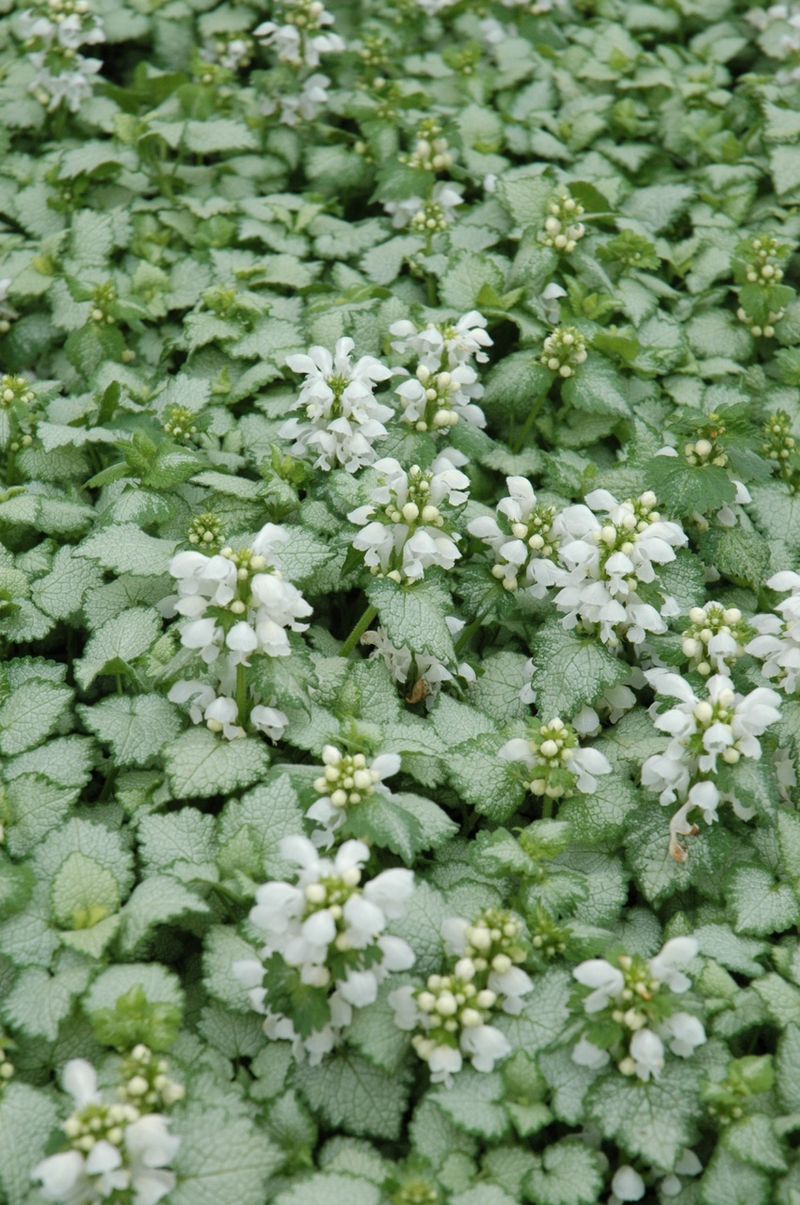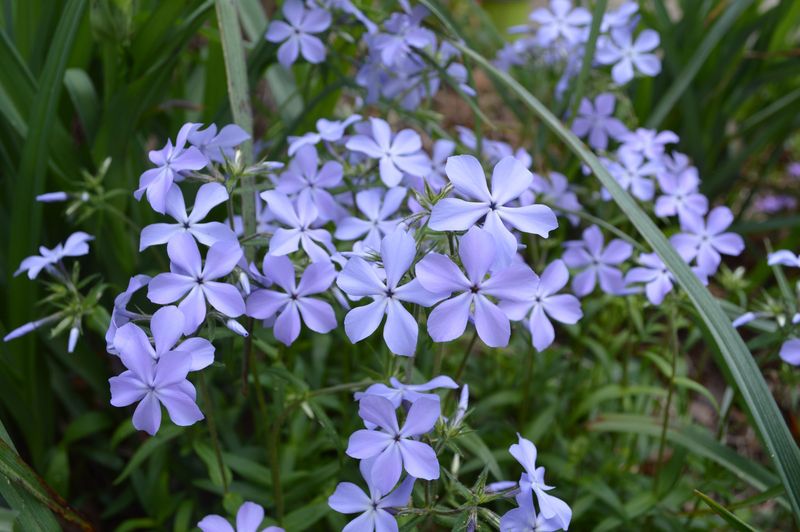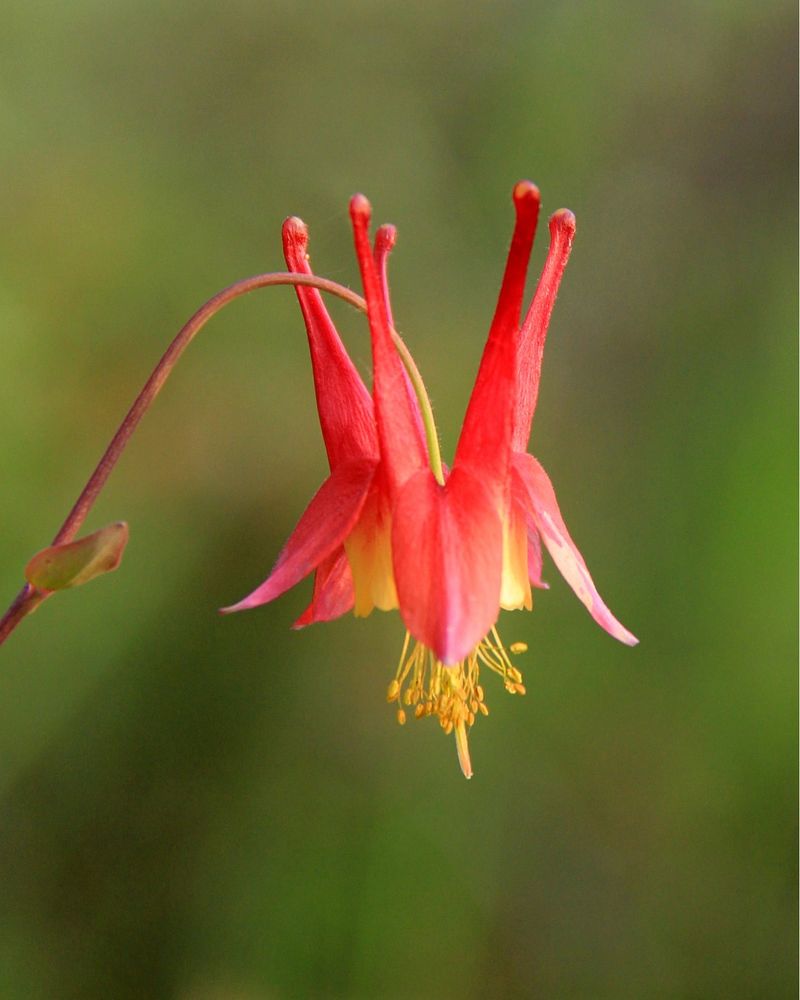Those shady corners in your Rhode Island yard don’t have to stay bare or boring. There are plenty of plants that love low light and thrive in cooler, tucked-away spots.
With the right picks, you can turn dim spaces into lush, colorful highlights that carry your garden through the rest of the season. All it takes is knowing what works—and planting now while the soil’s still warm.
1. Ferns For Lush Green Coverage
Native ferns bring woodland magic to shady spots with their delicate fronds. Lady ferns and Christmas ferns establish quickly in Rhode Island’s climate, creating a natural understory feel.
Their root systems help prevent erosion on slopes, while their feathery appearance softens harsh landscape features. Once established, these hardy plants need minimal care beyond occasional watering during dry spells.
2. Bleeding Heart For Spring Drama
Bleeding Heart plants dazzle with their heart-shaped pink or white blooms dangling from arched stems. These spring showstoppers perform beautifully in Rhode Island’s partial to full shade conditions.
Plant them where you can enjoy their romantic display from April through June. After flowering, the foliage gracefully dies back, making room for summer companions. Their old-fashioned charm adds whimsy to woodland gardens.
3. Astilbe For Feathery Plumes
Astilbe brings firework-like blooms to dark corners with its feathery flower plumes in shades of pink, red, lavender, and white. The fern-like foliage provides texture even when not flowering.
Rhode Island gardeners appreciate how these reliable perennials thrive in our humid summers. Plant several varieties for a staggered bloom time from early to late summer. They pair beautifully with hostas and ferns for a complete shade garden design.
4. Hosta Varieties For Textural Interest
Hostas reign supreme in the shade garden world with their stunning foliage ranging from tiny to enormous, blue-green to variegated gold. Rhode Island’s climate provides ideal growing conditions for these low-maintenance perennials.
Group different varieties together for a tapestry of textures and colors. While primarily grown for their leaves, don’t overlook their summer flower stalks that attract hummingbirds. Just keep an eye out for slugs who find them equally appealing!
5. Hellebores For Winter Blooms
Hellebores earn their nickname “Lenten Rose” by flowering during late winter when most gardens sleep. Their nodding blooms in shades of white, pink, purple, and speckled patterns brighten Rhode Island’s darkest months.
Plant these tough perennials where you can appreciate their downward-facing flowers. Their leathery, evergreen foliage provides year-round structure in the garden. Many varieties self-seed gently, creating charming colonies over time without becoming invasive.
6. Japanese Forest Grass For Elegant Movement
Japanese Forest Grass (Hakonechloa) cascades like a golden waterfall in shady spots. The arching, ribbon-like leaves catch even the slightest breeze, bringing gentle movement to still corners of Rhode Island gardens.
Unlike many grasses that demand full sun, this beauty thrives in shade. ‘Aureola’ variety offers striking gold-striped foliage that practically glows in dark spots. Plant it in containers or as a ground cover where its flowing habit can be fully appreciated.
7. Coral Bells For Colorful Leaves
Coral Bells (Heuchera) revolutionize shade gardening with their kaleidoscope of foliage colors – from caramel and purple to silver and lime green. The ruffled, often metallic-looking leaves create year-round interest in Rhode Island gardens.
Their dainty flower stalks attract hummingbirds in summer. New varieties boast improved cold hardiness perfect for our region. Try ‘Caramel’ for warm tones or ‘Palace Purple’ for dramatic dark foliage that stands out against green companions.
8. Toad Lily For Fall Surprises
Toad Lilies burst into bloom just when most shade gardens wind down for the season. Their orchid-like spotted flowers appear along arching stems in September and October, extending Rhode Island’s garden enjoyment.
Plant these Asian woodland natives where you can appreciate their intricate blooms up close. Their preference for moist, humus-rich soil matches many Rhode Island gardens perfectly. Some varieties feature attractively variegated foliage for multi-season interest.
9. Ajuga For Ground Coverage
Ajuga creates a living carpet in difficult shady areas where grass struggles. Also called bugleweed, this fast-spreading ground cover produces spikes of blue-purple flowers in spring above glossy, often colorful foliage.
‘Black Scallop’ offers nearly black leaves, while ‘Burgundy Glow’ features a tapestry of pink, white and green. Rhode Island gardeners appreciate how ajuga chokes out weeds and tolerates poor soil. Use it to unify separate plantings or to cover bare soil under trees.
10. Rhododendrons For Woodland Structure
Rhododendrons thrive in Rhode Island’s acidic soils and bring spectacular spring color to shady corners. Their glossy evergreen leaves provide structure year-round, while their showy flower clusters create weeks of drama.
Choose compact varieties like ‘PJM’ that won’t outgrow small spaces. Many newer cultivars offer improved disease resistance important in our humid climate. Plant them where they’re protected from harsh winter winds for best performance.
11. Spotted Deadnettle For Colorful Carpets
Spotted Deadnettle (Lamium) brightens dark corners with silvery, variegated foliage that seems to glow in low light. Pink, purple or white flowers appear above the attractive leaves from spring through summer.
‘White Nancy’ and ‘Beacon Silver’ are standout varieties for Rhode Island gardens. This low-growing perennial quickly fills spaces between larger plants. Its shallow root system makes it perfect for planting under trees where deep digging might damage roots.
12. Native Woodland Phlox For Spring Color
Woodland Phlox carpets Rhode Island’s forest floors with fragrant lavender-blue flowers each spring. This native plant evolved specifically for our region’s growing conditions and supports local pollinators.
Once established, it forms spreading mats of semi-evergreen foliage that suppress weeds naturally. The sweet scent fills the garden on warm spring evenings. Look for the cultivar ‘Blue Moon’ for especially vibrant color that stands out in shady spots.
13. Brunnera For Heart-Shaped Leaves
Brunnera ‘Jack Frost’ dazzles with silver heart-shaped leaves veined in green that brighten the darkest corners. Delicate blue forget-me-not flowers hover above the foliage in spring, creating a magical effect.
This perennial thrives in Rhode Island’s cool, moist conditions. The stunning foliage persists from spring through fall, making it more versatile than spring-only bloomers. Plant it where you can appreciate both its flowers and remarkable leaves up close.
14. Columbine For Delicate Beauty
Columbine’s dancing flowers with distinctive spurred petals bring fairytale charm to shady Rhode Island gardens. Available in virtually every color, these graceful perennials attract hummingbirds and butterflies.
Our native Eastern red columbine (Aquilegia canadensis) offers reliable performance and ecological benefits. Allow some seedheads to remain and they’ll gently self-sow, creating natural-looking drifts over time. Their fern-like foliage provides textural interest even when not in bloom.
15. Bigroot Geranium For Tough Conditions
Bigroot Geranium tackles difficult dry shade where other plants fail. Unlike fussy annual geraniums, this tough perennial produces masses of pink or purple flowers above attractive lobed foliage.
Rhode Island gardeners appreciate its long bloom time from late spring through summer. Fall brings spectacular red and orange foliage color for multi-season interest. ‘Bevan’s Variety’ offers especially vibrant magenta flowers that stand out in shady corners.
16. Solomon’s Seal For Elegant Arches
Solomon’s Seal creates architectural elegance with its gracefully arching stems adorned with dangling white bell flowers. Native to Rhode Island’s woodlands, it spreads slowly to form impressive colonies over time.
The variegated form adds brightness to dark corners with cream-edged leaves. In fall, the foliage turns golden yellow before dying back for winter. Deer typically avoid this woodland beauty, making it perfect for properties where browsing is a problem.

